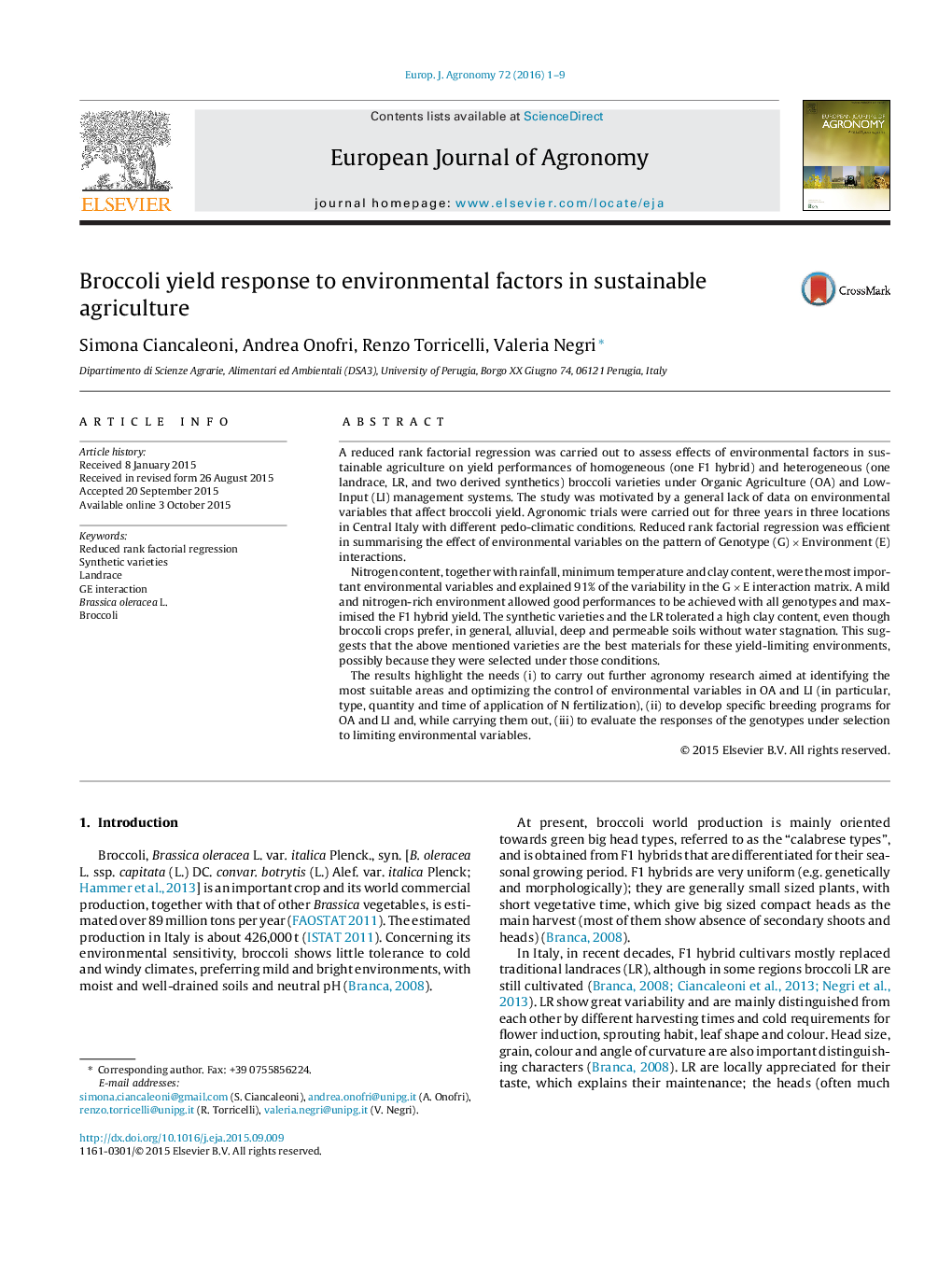| کد مقاله | کد نشریه | سال انتشار | مقاله انگلیسی | نسخه تمام متن |
|---|---|---|---|---|
| 4508705 | 1624453 | 2016 | 9 صفحه PDF | دانلود رایگان |
• Reduced rank factorial regression provides insight on the effect of environmental variables on G × E interactions in broccoli varieties.
• Yield variability for all the broccoli varieties depended mainly on seasonal variations.
• Broccoli synthetic varieties developed from a landrace were less susceptible to environmental variables than a hybrid F1 in organic and low-input agriculture.
• Breeding for organic and low-input agriculture should carefully consider limiting environmental variables, which are usually less concerning in conventional agriculture.
A reduced rank factorial regression was carried out to assess effects of environmental factors in sustainable agriculture on yield performances of homogeneous (one F1 hybrid) and heterogeneous (one landrace, LR, and two derived synthetics) broccoli varieties under Organic Agriculture (OA) and Low-Input (LI) management systems. The study was motivated by a general lack of data on environmental variables that affect broccoli yield. Agronomic trials were carried out for three years in three locations in Central Italy with different pedo-climatic conditions. Reduced rank factorial regression was efficient in summarising the effect of environmental variables on the pattern of Genotype (G) × Environment (E) interactions.Nitrogen content, together with rainfall, minimum temperature and clay content, were the most important environmental variables and explained 91% of the variability in the G × E interaction matrix. A mild and nitrogen-rich environment allowed good performances to be achieved with all genotypes and maximised the F1 hybrid yield. The synthetic varieties and the LR tolerated a high clay content, even though broccoli crops prefer, in general, alluvial, deep and permeable soils without water stagnation. This suggests that the above mentioned varieties are the best materials for these yield-limiting environments, possibly because they were selected under those conditions.The results highlight the needs (i) to carry out further agronomy research aimed at identifying the most suitable areas and optimizing the control of environmental variables in OA and LI (in particular, type, quantity and time of application of N fertilization), (ii) to develop specific breeding programs for OA and LI and, while carrying them out, (iii) to evaluate the responses of the genotypes under selection to limiting environmental variables.
Journal: European Journal of Agronomy - Volume 72, January 2016, Pages 1–9
